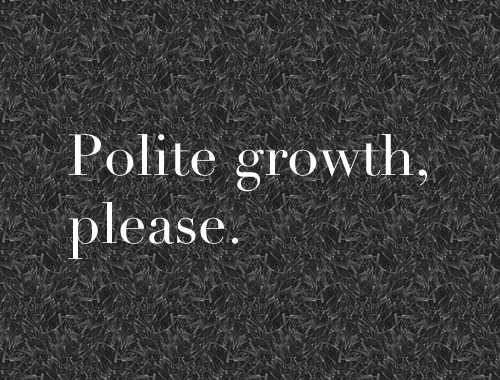In every startup’s pursuit of growth, it’s important to remember that first and foremost we’re looking to create something that’s sustainable. Building something big and impactful takes years, and your distribution strategy will need to weather the passage of time. If you slash and burn your customers, your platform, or your product design, it’s a matter of time before your active users curve jumps the shark.
This means that your growth strategy has to be “polite” and be considerate of all the parties involved:
Customer-friendly
If people love your product, it’ll growth more quickly and be more viral. Ultimately if you put the same viral mechanics on a photo-sharing product versus a tax returns-sharing product, the former will always do better because no one wants to share their tax returns, not even presidential candidates. Tapping into an emotional desire to share and communicate is a prerequisite for building a long-term product.
Don’t try to force people to do what they don’t want to do, all in the first session. You’ll burn out your audience, fail to retain an active userbase, and while that might look good in the first few months, over time your churn will beat your growth rate. That leads to a rapid decline, which you don’t want.
Platform-friendly
This decade has been amazing for platforms. 20 years ago, it was just Windows. Today, you can build for iOS, Android, Facebook, Twitter, and many other emerging platforms are coming out. Each platform wants something different from you, and you have to learn to play by the rules to have a lasting relationship with them.
Obviously this means you can’t burn their users – that’s the worst thing to do. Dumb, too. Some platforms want more engagement and user-generated content, and others want ad revenues. Learn what it is that they want, and make sure your product helps them as much as it helps you.
Product-friendly
And finally, it’s important that your growth mechanics don’t compromise the design of your product. When you first started writing your product, I’m sure there were big aspirations about what it could do and what good it would ultimately accomplish for the world. Halfway along the way, when it’s time to work on marketing and growth, it can be easy to overreact and compromise your core design. Products meant for classy audiences suddenly turn into quiz apps. Ultimately, to stay excited about your product over the course of years, it’s gotta stay in a sweet spot – you can’t let growth destroy that.
There’s a lot more I want to write about on getting sustainable growth- everything from how to use A/B testing not to make a number go up, but how to make a number stay unchanged while you iterate on the feature qualitatively. I’d also like to write about the quantitative effect of overusing notifications because spam tests well short-term, but destroys your response rates long-term. Those, and many other topics, coming up soon.
Also, if you’re interested, I’ve written before about the importance of balancing growth and other factors in previous posts: You don’t need a growth hacker, How do I balance user satisfaction versus virality?, When does high growth not imply product/market fit?, and Know the difference between data-informed and data-driven.
